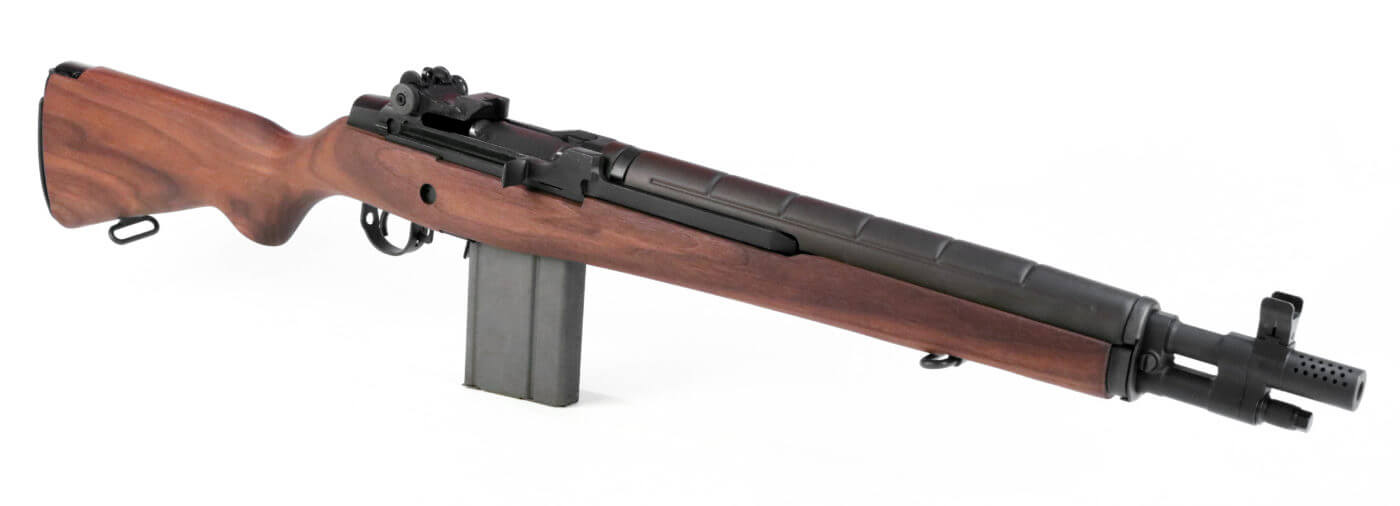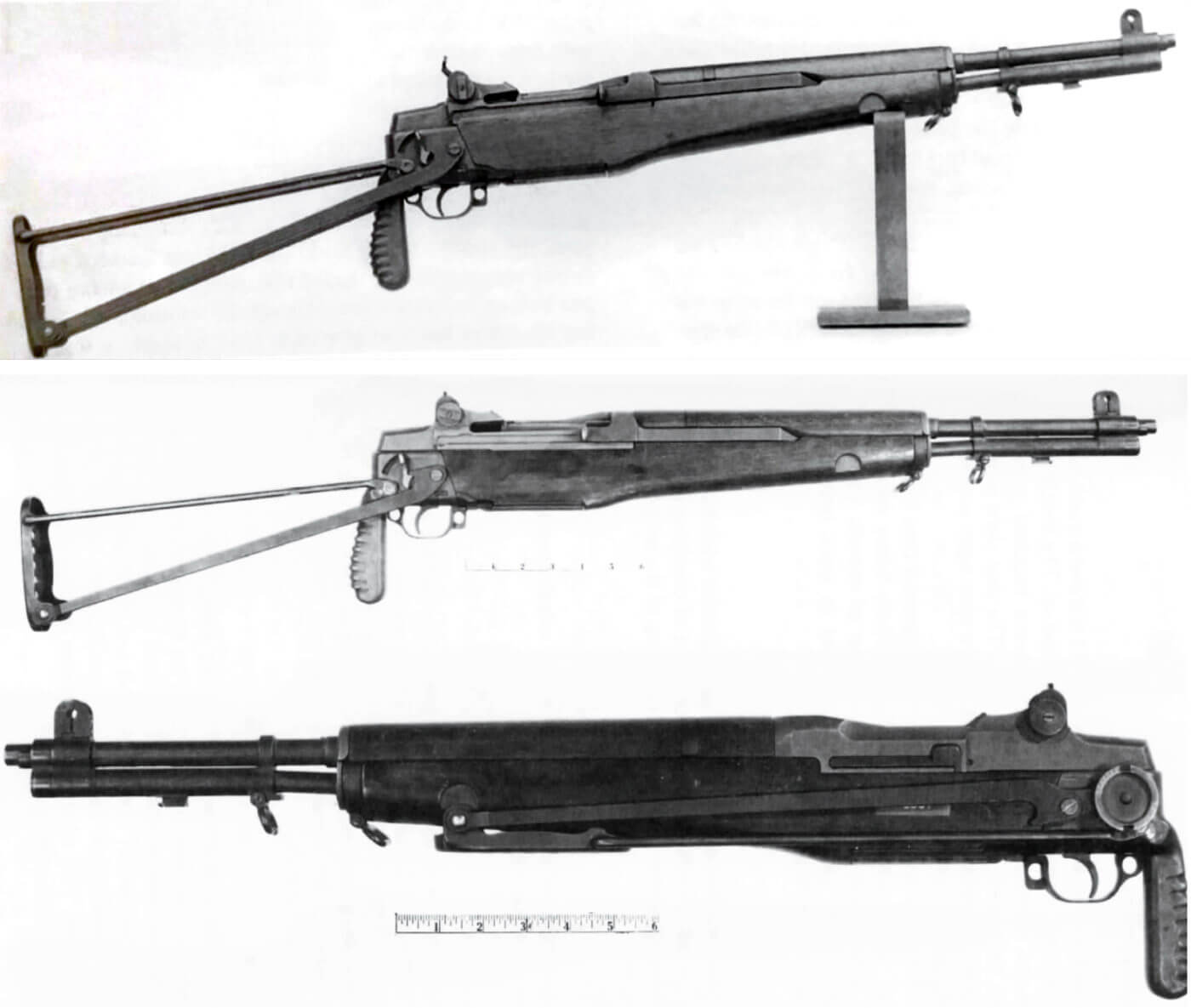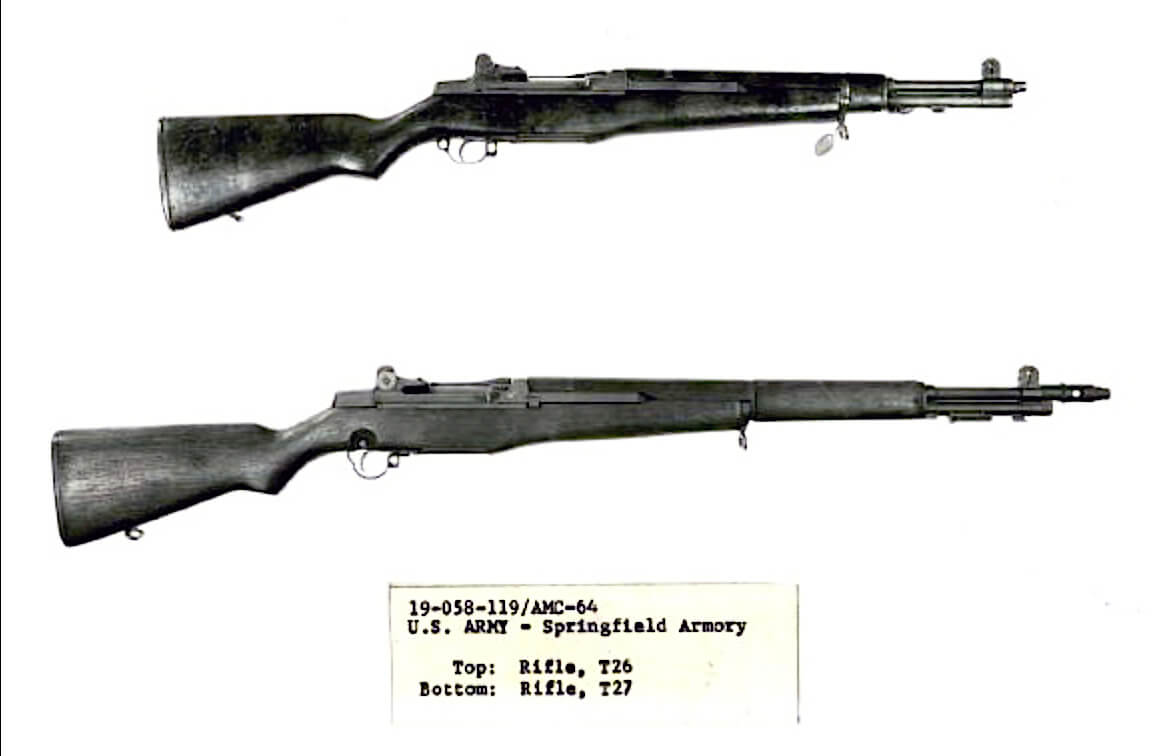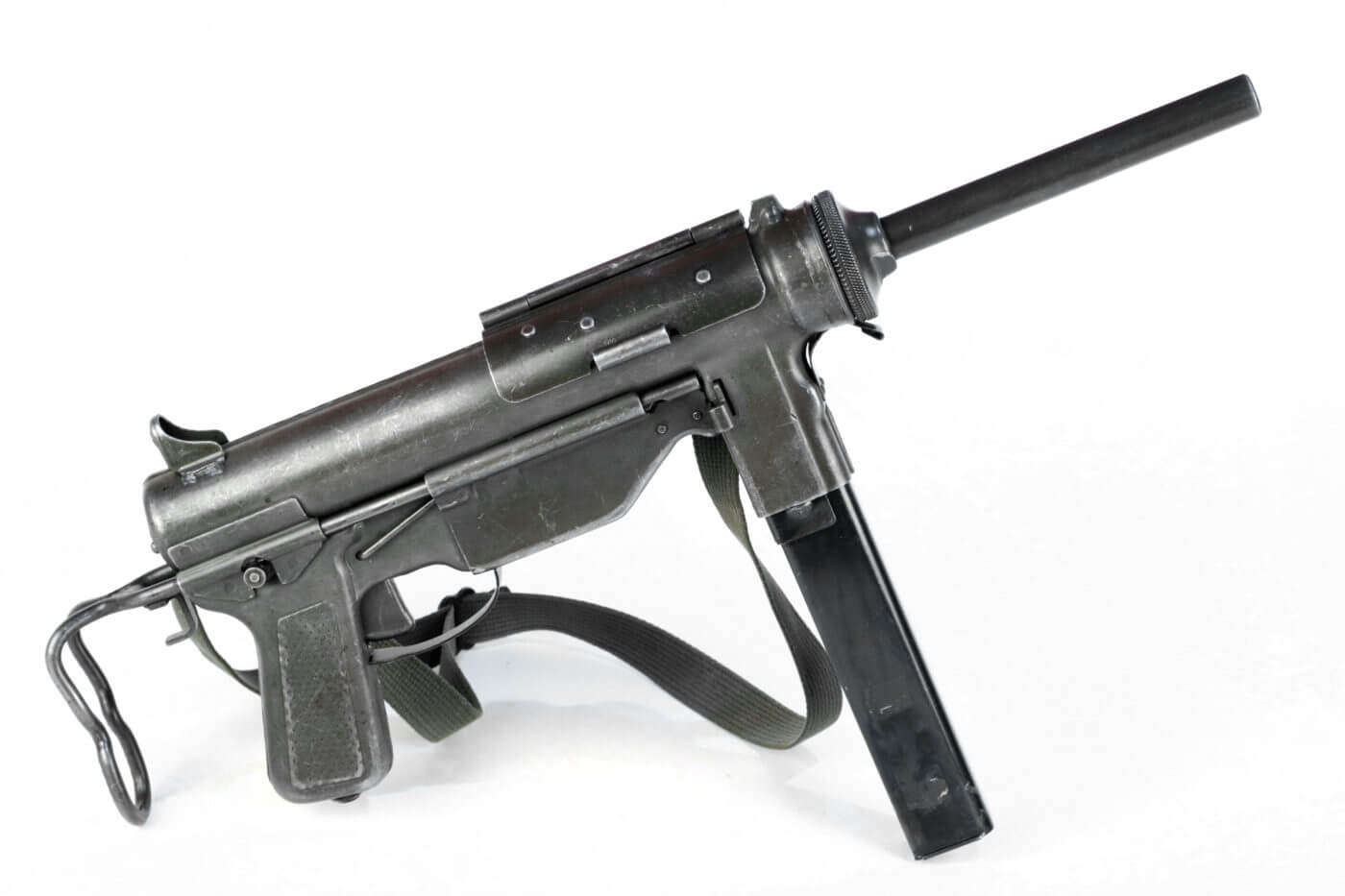What Is the “Tanker”?
December 10th, 2019
4 minute read
The new Springfield Armory M1A Tanker melds the timeless power, utility and class of the traditional M1A rifle with the maneuverability and practicality of the shortened SOCOM 16. The end result offers Information Age function and design along with Old World parkerized steel and stained walnut. However, today’s M1A Tanker has some remarkably deep roots.

Origin Story
Bottom line up front, the “Tanker Garand” as we know it today has a bit of a convoluted history. There was indeed a two-pronged parallel development process during the war to produce a shortened version of the standard M1 rifle for use by paratroopers and jungle fighters, but the term “Tanker Garand” was actually coined in the post-World War II era. However, the same tactical exigencies that drove the genesis of this abbreviated Garand still make for a superlative compact rifle today.

Late in 1944, fortunes were turning against both the Japanese and the Nazis, but there yet remained a great deal of fight left in the snake. Around this time engineers began experimenting with a shortened Garand for use by airborne troops and the like.
That initial effort was marked M1E5 but classified as the M1A3. However, it fared poorly. This new gun incorporated a folding steel pantograph stock that was both unwieldy and uncomfortable. Additionally, the sluggish powders used in wartime .30-06 ammunition lit up the countryside unduly when fired after dark.

Meanwhile, one Colonel William Alexander served on the Pacific Warfare Board, a brain trust of sorts tasked with review of weapons systems in theater from a strategic perspective. He tasked the Ordnance Division of the 6th Army in the Philippines to bodge together some 15,000 shortened M1 rifles for use in confined environments. They eventually produced 150 handmade samples before running out of steam.
These guns ended up going in several different directions with at least one of them actually seeing combat with the 503d Parachute Infantry Regiment. Two of these homebrewed weapons were shipped back to the United States for evaluation. This rejuvenated the previous project and catalyzed yet another updated prototype designated the T26.
The T26 had its barrel shortened from 24 to 18 inches and sported a pruned forearm to match. Soon this endeavor was overshadowed by such stuff as the island-hopping juggernaut and atomic bombing. As a result the T26 project got canned as well.

The military is hard on its toys, so most of those prototype rifles were ground up during testing. The sheer novelty of the things makes them unimaginably valuable to a dedicated Garand nerd.
After the war, the world was covered in a thin patina of small arms, and a lot of returning soldiers and Marines wanted a copy of their service weapon sitting in their closet back home. As a result, enterprising folk sold gobs of military surplus guns. To add some flair to their offerings, the shortened Garand project was resurrected and offered as the infamous “Tanker” Garand.

Information Age Treatment
I’ve spent some time working inside armored vehicles myself, and they are unimaginably cramped. Against all expectations, the M3 Grease Gun, a cheap stamped steel stuttergun that cost a paltry $18 apiece back during World War II, actually soldiered on until the 1990’s as an individual weapon for armor crewmen. The Army didn’t cling to its Grease Guns through the First Gulf War because they were awesome. We kept using the Grease Gun because it was small.
So clearly, compact size was an important feature. But, adapting an M1 Garand into a tanker’s personal defense weapon is about as practical as stuffing a housecat into a Pringles can. There are just better places to keep your cat. However, there yet remains a persistent need for a handier version of a full-sized .30-caliber rifle.

While the M1A Tanker might not be historically accurate in the purest sense, that doesn’t make it any less valuable to today’s shooter. Taking the short and handy concept of the “M1 Tanker” and applying it to the detachable box magazine-fed M1A gives you a rifle that combines “Garand’y” charm with the benefits of the M1A’s more modern updates. The result is a handy and compact .308 that looks the part of a World War II-era rumbler, but gives you a gun that isn’t a priceless prototype that you can actually shoot!
Join the Discussion
Featured in this article
Continue Reading
Did you enjoy this article?

 303
303







